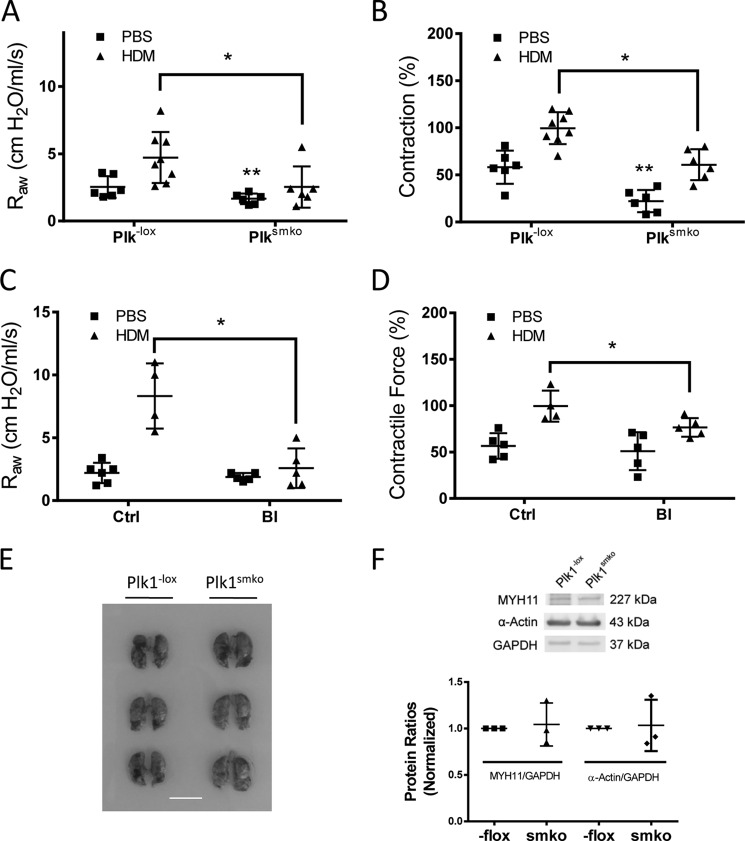FIGURE 6.
Knock-out or inhibition of Plk1 diminishes airway resistance and contractile response of tracheal rings from HDM-exposed mice. A, Plk1−lox and Plk1smko mice were exposed to HDM for 6 weeks. Airway resistance (RAW) in response to inhalation of 80 mg/kg MCh was then measured. The data represent the means ± S.D. (*, p < 0.05). **, significantly lower airway resistance in Plk1smko mice treated with PBS than in Plk1−lox mice treated with PBS (p < 0.05). n = 6–8 mice/each group. B, the contractile response of tracheal rings from these mice was determined by using an in vitro organ bath system. Contractile force is normalized to the mean maximal force of rings from HDM-treated Plk1−lox mice. The data represent the means ± S.D. (*, p < 0.05). **, significantly lower tracheal contraction of Plk1smko mice treated with PBS than Plk1−lox mice treated with PBS (p < 0.05). n = 6–8 mice/each group. C, C57BL/6J mice were exposed to HDM in the presence or absence of the Plk1 inhibitor BI6727 as described under “Experimental Procedures.” Intranasal instillation of BI6727 inhibits RAW in mice treated with HDM. The data represent the means ± S.D. (*, p < 0.05, n = 4–6 mice/group). D, treatment with the Plk1 inhibitor BI6727 attenuates HDM-sensitized tracheal contraction ex vivo. Contractile force is normalized to maximal force of rings from HDM- and vehicle-treated mice. Error bars indicate S.D. (*, p < 0.05, n = 4–5 mice/group). E, the size of lungs from Plk1smko mice is similar to that from Plk1−lox mice. Shown are images of lungs from 3 Plk1−lox mice and 3 Plk1smko mice. Scale bar, 1 cm. F, blots of tracheal smooth muscle tissues from Plk1−lox mice and Plk1smko mice were probed with antibodies against smooth muscle myosin heavy chain 11 (MYH11), α-actin. and GAPDH. Protein ratios of MYH11/GAPDH and α-actin/GAPDH from Plk1smko mice are normalized to those from Plk1−lox mice. The data represent the means ± S.D. (NS, not significant, n = 3 mice/group).

